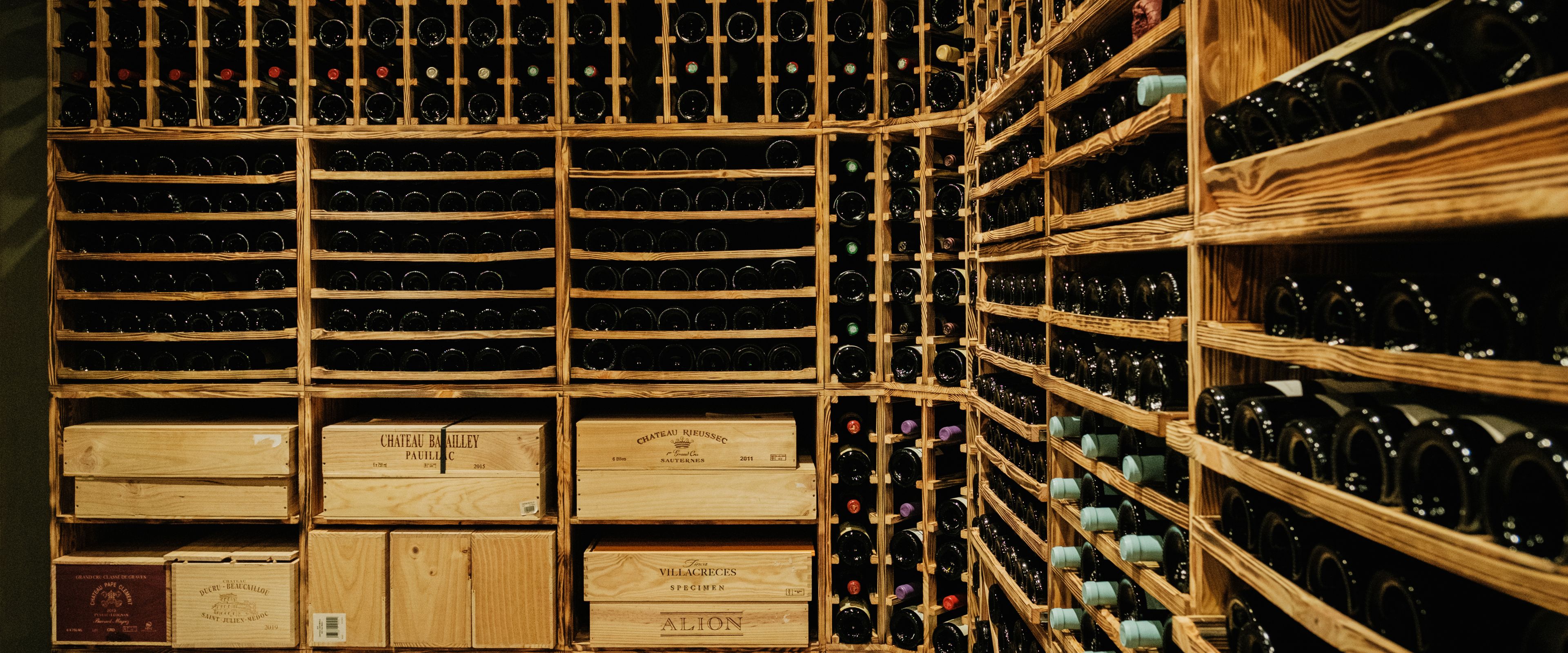
Guides
Worth knowing about wine racks
Decorate a wine room
Do you also dream of furnishing a wine room, a wine cellar or an area of your home with wine? There are many ways to do it, and with our solutions, interior designers and interior design tools, only your imagination sets the limits for your dream interior design.
Wine racks are essential for any wine lover who wants to store their bottles correctly and aesthetically pleasing. This guide will help you understand what to consider when choosing the right wine rack for your home.

Materials and design.
Purpose of the wine rack
Wine racks are designed to store wine bottles in the correct position, which is usually horizontal. This ensures that the wine is constantly in contact with the cork stopper, preventing the cork from drying out and shrinking. A dry and shrunken cork can cause air to enter the bottle and oxidise the wine, destroying the quality.
Wine racks are available in many different materials, including wood, metal and plastic. The choice of material can affect both the appearance of the shelving unit and its functional properties. Wood is popular for its classic beauty and good insulating properties, while metal is often chosen for its modern aesthetics and durability.

Practical usability and aesthetics.
Capacity and adaptation
When choosing a wine rack, it’s important to consider the number of wine bottles you plan to store. Wine racks vary significantly in size, from small models that can hold a few bottles to large racks that can hold hundreds. Think about your current collection and any future expansion.
Several of our brands are modular wine racks, so you can easily build and expand them as you wish.
When placing your wine rack in your home, avoid placing it in direct sunlight or near heat sources as this may cause the racks to dry out. Also avoid placing the rack close to vibrations, such as on top of or close to a washing machine.
A cool, dark and stable environment is ideal for long-term wine storage. Consider whether you need a temperature-controlled unit (a cooling unit) or whether your home already offers suitable conditions, e.g. in the basement.
In addition to functionality, your wine rack should also complement the aesthetics of your home. Many wine racks are designed with a stylish appearance that can function as part of your interior design. Consider different styles and colours to match your space and think of the wall system as a piece of furniture that is both practical and decorative.
The wine rack in your home.
Care and cleaning instruction
To preserve and maintain wooden wine racks, we recommend wiping with a soft microfibre cloth to remove dust and dirt. If necessary, wring out the cloth in lukewarm water and wipe it off for more stubborn dirt. Make sure your wine room has an air humidity environment below 75%, as wood can host mould. Also ensure good air circulation around the shelves to prevent moisture accumulation and mould.
A well-chosen wine rack is not only a practical solution for storing wine; it’s also an investment in preserving your wine collection and enhancing your home. By choosing with care, you can ensure that your wine is stored in optimal conditions while enriching your home aesthetically.
We are always happy to help you find the right wine storage solution for you.